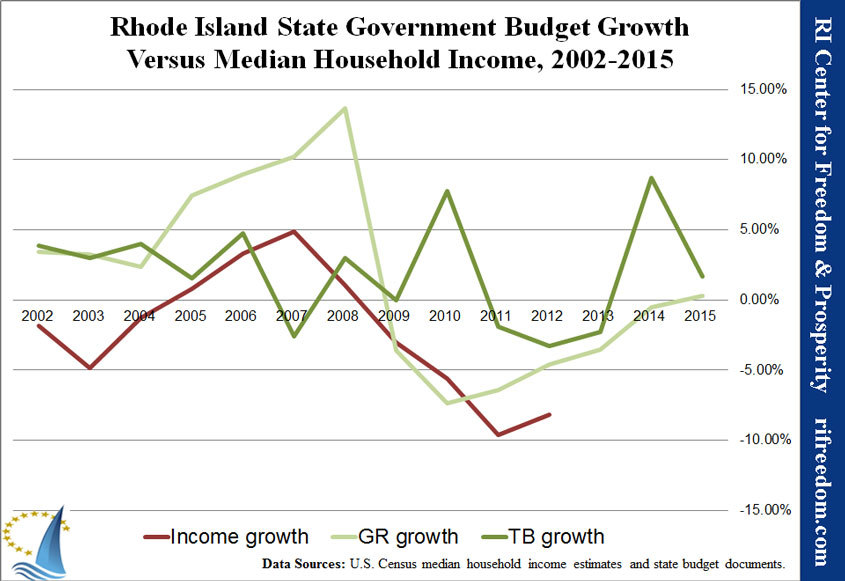Budget Growth and Household Income
As he’s wont to do, Ted Nesi has posted a pair of interesting charts on Rhode Island budget growth during the Chafee years. The takeaways are that a more-or-less flat budget (over three years) took off by about a billion dollars over the last two, and (because federal money decreased for 2012 and 2013), the total increase over the last four was about half state taxpayer money.
Before the House Finance Committee’s numbers came out, Andrew Morse recently gave a longer-term perspective with some more charts. The takeaway, there, is that federal money filled a gap for a couple of years, followed by a trade-off with state funds with mutual increases, now.
For some additional perspective, I put together the following chart. The dark green line shows the inflation-adjusted cumulative growth in the state government’s total budget — state and federal sources. The lighter green line shows the inflation-adjusted cumulative growth of just general (i.e., state) revenue. And the red line shows the inflation-adjusted median household income from the U.S. Census (as much as available).
The first observation to make is that, working together, the state and federal government has managed to ensure that the state government is able to keep its spending growing more quickly than inflation. When the recession hit, the Obama administration filled the gap for the state government, and the Chafee administration moved to make up the difference when it went away.
The second observation to make is one of priorities. Note that, with the one exception of when the federal government offered its massive supplement, general revenue always manages to grow more than median household income. Similarly, general revenue growth kept going for a year after income tanked, but renewed its growth the year before Rhode Islanders’ income hit bottom.
The question is whether income growth has managed to keep pace with the state government’s general revenue demands. We know that the population has, at best, been stagnant, and has probably shrunk and become poorer, so I tend to doubt households are anywhere near the same inflation-adjusted income that they enjoyed at the turn of the century.
In other words, the priority of the state government of Rhode Island is clearly the state government of Rhode Island. That needs to change.



